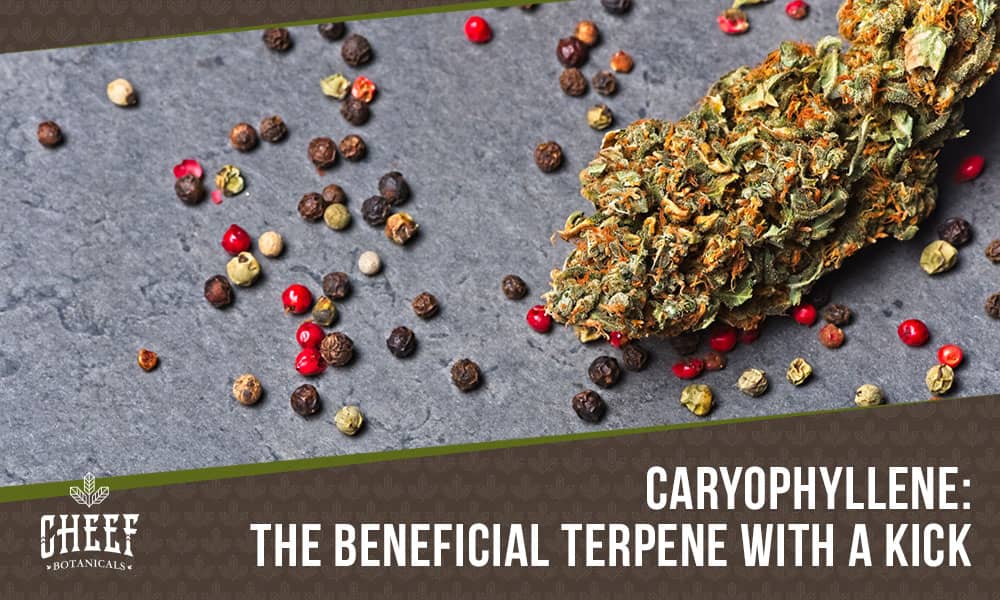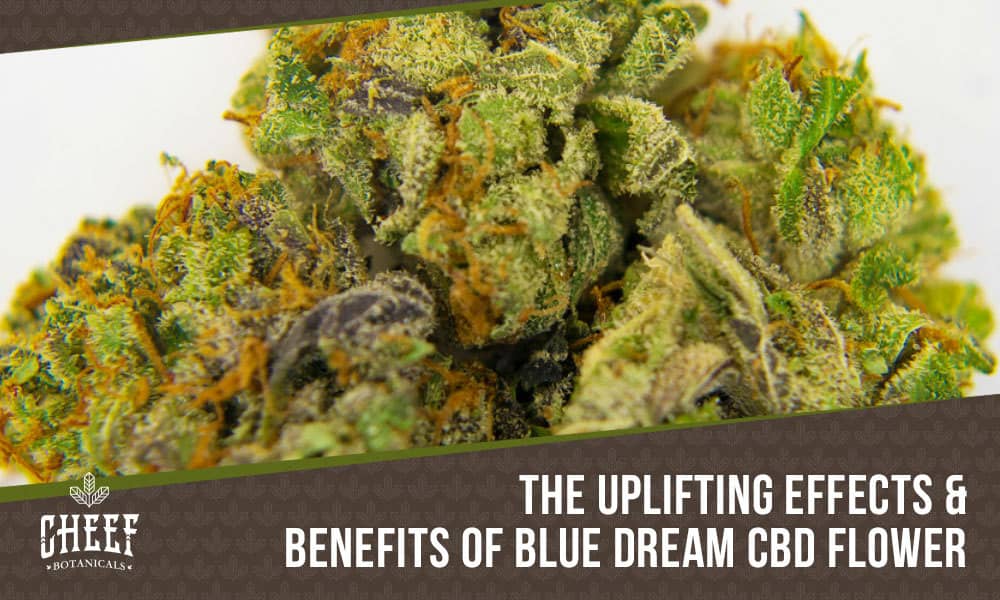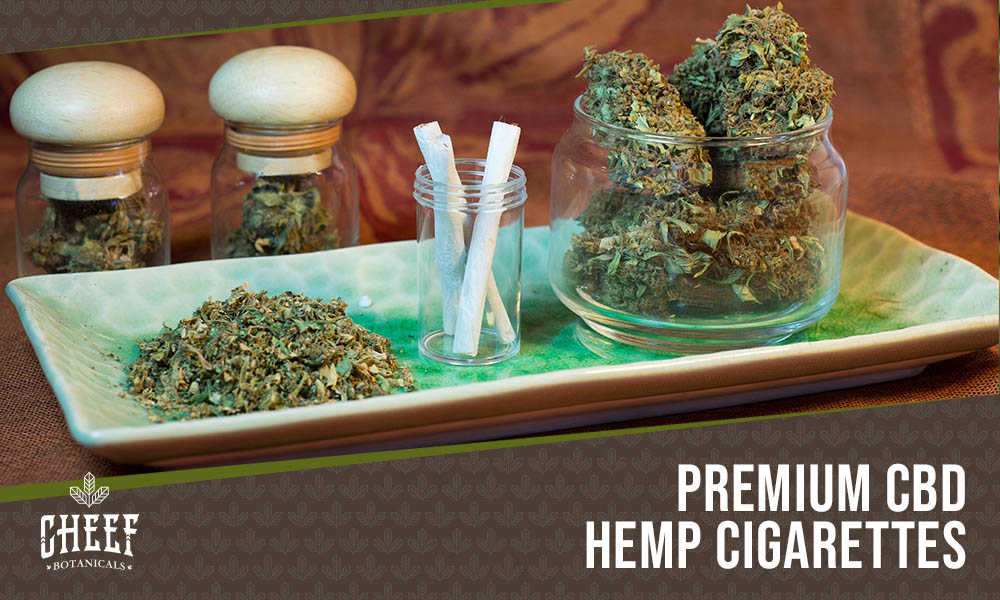Caryophyllene is one of the most abundant terpenes found in cannabis. It is responsible for the fantastic flavors and alluring aromas of many CBD hemp strains. Caryophyllene also naturally occurs in many plants.
When searching for cannabis strains that contain caryophyllene, it's challenging to find hemp that doesn't have any of these special terpenes. This terpene may be common, but it's far from ordinary. This guide will teach you everything you need to know about caryophyllene.
Many believe that terpenes are a plant's way of deterring herbivores. Some plant-eating animals or insects may not enjoy these compounds' smell, but we humans love them. Terpenes are used in lotions, perfumes, cleaning materials, and wellness products for their lovely fragrances.
Terpenes come in a wide variety of smells, many of which are instantly recognizable. Since terpenes are found in fruit rinds, tree bark, and beer hops, some hemp strains may remind you of lemons or a dark IPA. These natural compounds are frequently seen in the field of aromatherapy. Their use dates back to the ancient Egyptians, who would use essential oils derived from rosemary and sage.
Terpenes are extracted from the essential oil of plants. For those interested in their pure form, bottles of terpene essential oils like limonene are often sold independently. You may also hear some people use the word "terpenoid," but these are not the same as terpenes.
The aromatic compounds naturally found in plants like cannabis are called terpenes. As these plants are dried, they go through a process called oxidation. When terpenes oxidize, they turn into terpenoids.


What are Terpenes?

What is Caryophyllene?
Also called beta-caryophyllene (or BCP), caryophyllene is one of the most common terpenes found in cannabis. This spicy compound may have a lot of syllables in its name, but you've likely smelled it before. BCP is a sesquiterpene, meaning it has one more isoprene unit than other terpenes. Being a sesquiterpene means that BCP molecules are larger than other terpenes such as pinene or terpinolene. The formal name of this compound, beta-caryophyllene (β-caryophyllene), may make you wonder if there is an alpha (α) form. There was indeed once an α-caryophyllene, and it was another terpene we now know as humulene. When humulene and caryophyllene were first discovered, they were both found to have identical molecular formulas. Humulene was labeled "α-caryophyllene," and the other was referred to as "β-caryophyllene." However, experts later realized that the two terpenes were isomers of one another. Isomers have the same formula, but their molecules are arranged differently. Since these two terpenes were found to be isomers, humulene is no longer been referred to as α-caryophyllene. Caryophyllene's name stuck around, and it is still acceptable to refer to this terpene as β-caryophyllene.Where is Caryophyllene Found?
Beta-caryophyllene can be found in different plants all over the world, including black pepper, cloves, cinnamon, hops, and cannabis flowers. The hemp plant has a high level of caryophyllene, and the terpene is used in many CBD products. Beta-caryophyllene is used as a food and cosmetic additive. This terpene is also used in some laundry detergents. Other products include:- Face creams
- Shampoos
- Hair conditioners
- Cooking spices
Caryophyllene Extraction Process
There are several ways to extract caryophyllene from hemp. Some processes use solvents, and one type even uses butane, which is in lighter fluid. These are dangerous techniques involving highly flammable chemicals that may leave behind toxic residue. The best extraction methods are solventless. One of the best processes uses natural CO2. Liquid CO2 passes through ground cannabis material. As it moves through the plant matter, the CO2 does an excellent job of extracting the plant's useful compounds. These compounds include cannabinoids (such as CBD), flavonoids, and terpenes. The CO2 evaporates, leaving the incredible ingredients that go into CBD products. Unlike extraction methods that use potentially toxic residue, natural CO2 evaporates nice and clean. Next time you're looking for CBD with high levels of caryophyllene, make sure the manufacturer uses safe CO2 extraction. After the extraction process, anything is possible. We can separate CBD molecules into isolate powders; terpenes flavor vape cartridges; there are countless combinations!What Do Caryophyllene Terpenes Smell & Taste Like?
Even when extracted from hemp, this terpene carries the same flavorful notes found in hops, cloves, black pepper, and cinnamon. Beta-caryophyllene (BCP) is an excellent ingredient in food because it delivers a spicy kick. BCP also gives CBD that same tasty flavor it provides black pepper and cinnamon. What about the smell? Caryophyllene has a strong, sinus-clearing aroma that has a similar kick as spicy food. Though, not everything that contains BCP will taste and smell identical. Other terpenes besides BCP may influence the overall scent of a CBD strain. Some caryophyllene-related flowers could have more of a musky aroma or the sickly-sweet smell of diesel. This is where some of the most iconic strains, such as Sour Diesel, get their name.
What Are the Effects of Caryophyllene?
Caryophyllene is well-known for its relaxing effects that can soothe nervous feelings. BCP may cause a numbing sensation when used with clove essential oil. Caryophyllene also has potential health-boosting properties, though experts are still researching these benefits. Numerous studies have sought to determine whether BCP can assist our bodies in addition to smelling and tasting so nice. This 2008 study aimed to find out if this terpene could affect individuals' appetite, and the results show promise. Fortunately, nature provided us with the perfect pairing for caryophyllene: CBD. Terpenes and CBD work well together because they both come from hemp. Combining cannabinoids and terpenes causes the entourage effect, which is the boost in CBD's effectiveness when you ingest all of hemp's compounds simultaneously. CBD helps our bodies by boosting our endocannabinoid system (ECS). The endocannabinoid system promotes homeostasis by regulating functions such as breathing, digestion, and heart rate. A properly functioning ECS is crucial for our health and well-being. Normally, we can give our ECS a helping hand with CBD. With beta-caryophyllene, we can double this assistance. BCP is unique because it is the only terpene that can also cannabinoid. This is because BCP amplifies the effectiveness of our endocannabinoid system in the same way CBD does. Both compounds interact with cannabinoid receptors, known as CB1 and CB2. CB1 receptors are primarily in the brain, while CB2 receptors are typically in peripheral organs. Caryophyllene can actually bind to our CB2 receptors in the same way that CBD does. The CB2 receptor has a considerable impact on our immune tissues, so caryophyllene can potentially help these areas. Also like CBD, β-caryophyllene promotes the function of our ECS without inducing any intoxicating effects.Popular Strains That Have Caryophyllene Terpenes
Beta-caryophyllene makes any CBD strain even better. We at Cheef Botanicals have you covered with plenty of hemp flower that contains high levels of this terpene. Some of the best strains with caryophyllene are:- Lifter
- John Snow CBG Flower
- Sour Space Candy
- Sour Diesel
- Durban Diesel
- Special Sauce
- Wagyu Kush
- OG Kush
- Bubba Kush
- Cherry Wine
- Goliath
- Tangie
- Silver Surfer
- Northern Lights



 CBD Gummies - Top Seller
CBD Gummies - Top Seller
 CBD + THC Gummy - Excellent Choice
CBD + THC Gummy - Excellent Choice
 CBD Hemp Flower - Highly Rated
CBD Hemp Flower - Highly Rated
 Full Spectrum CBD Oil - Good Value
Full Spectrum CBD Oil - Good Value



Leave a comment
This site is protected by hCaptcha and the hCaptcha Privacy Policy and Terms of Service apply.